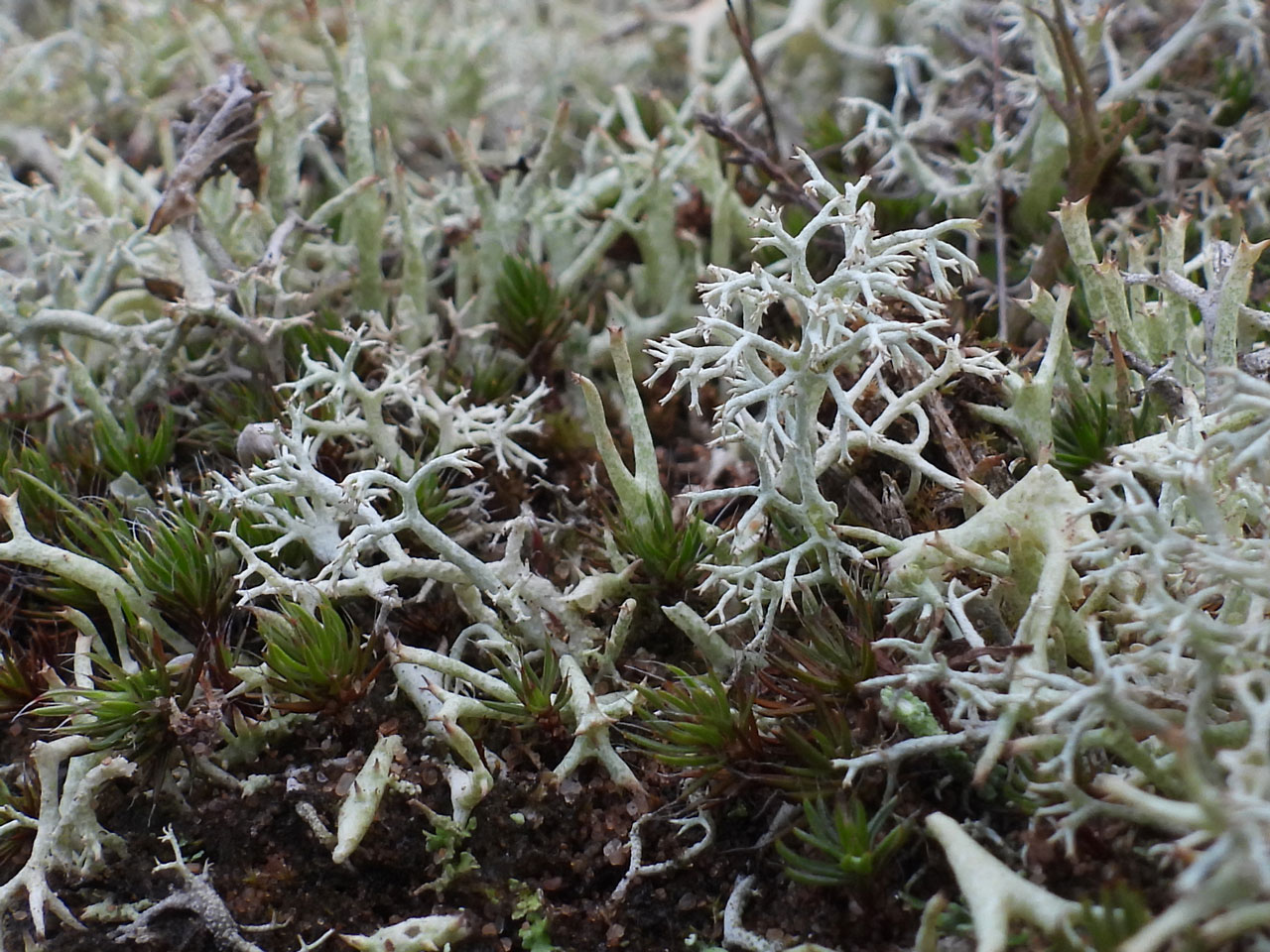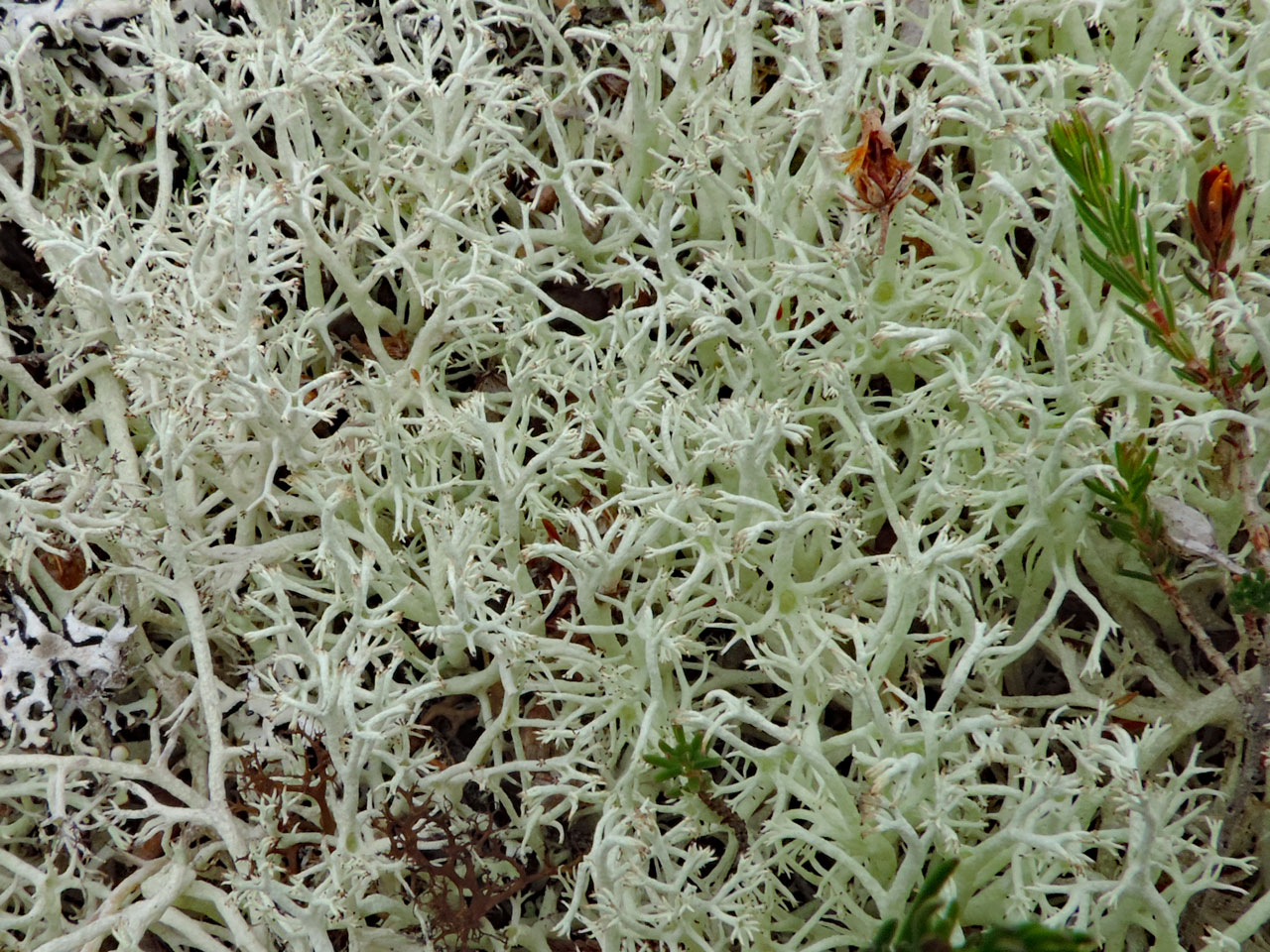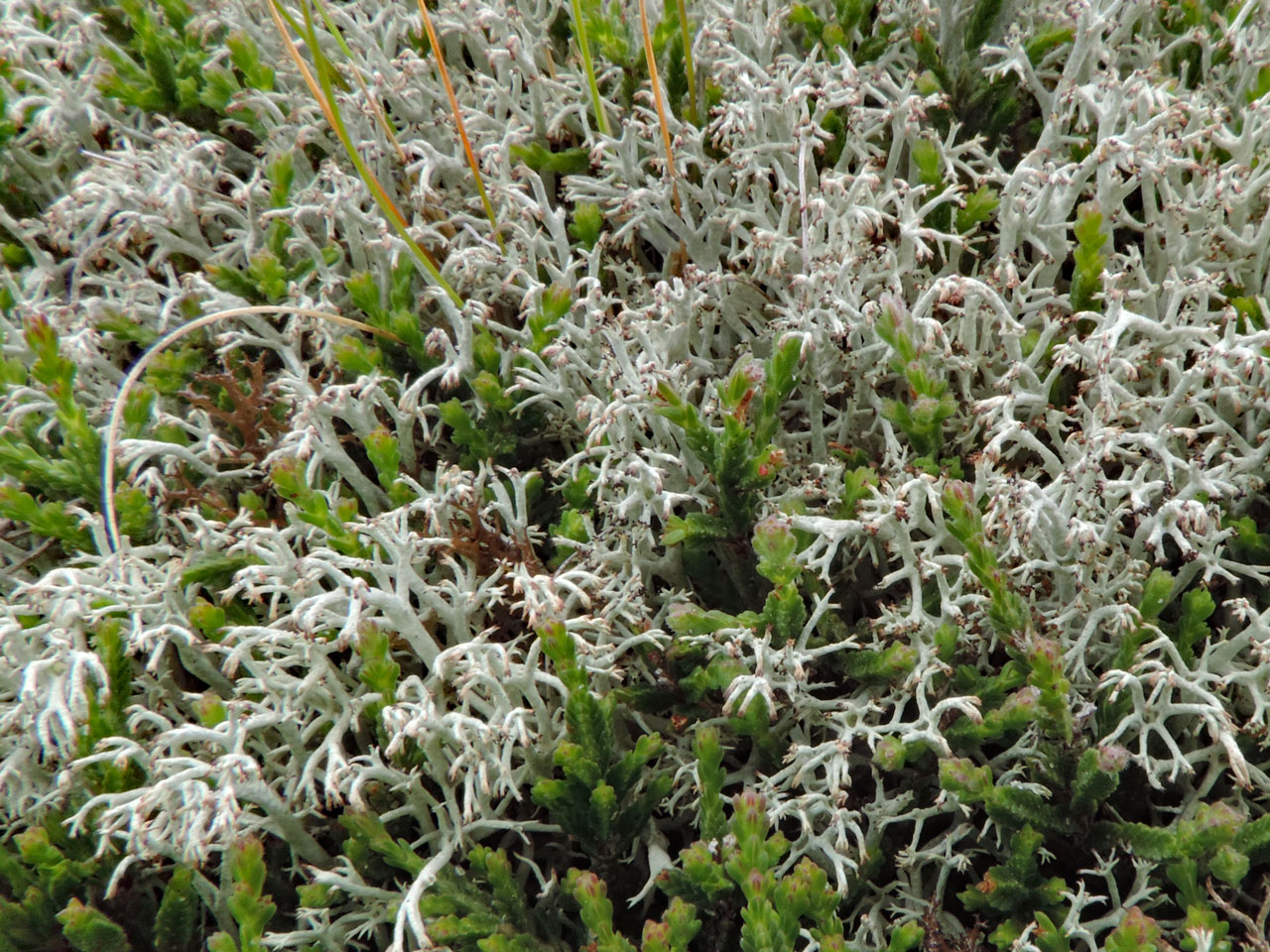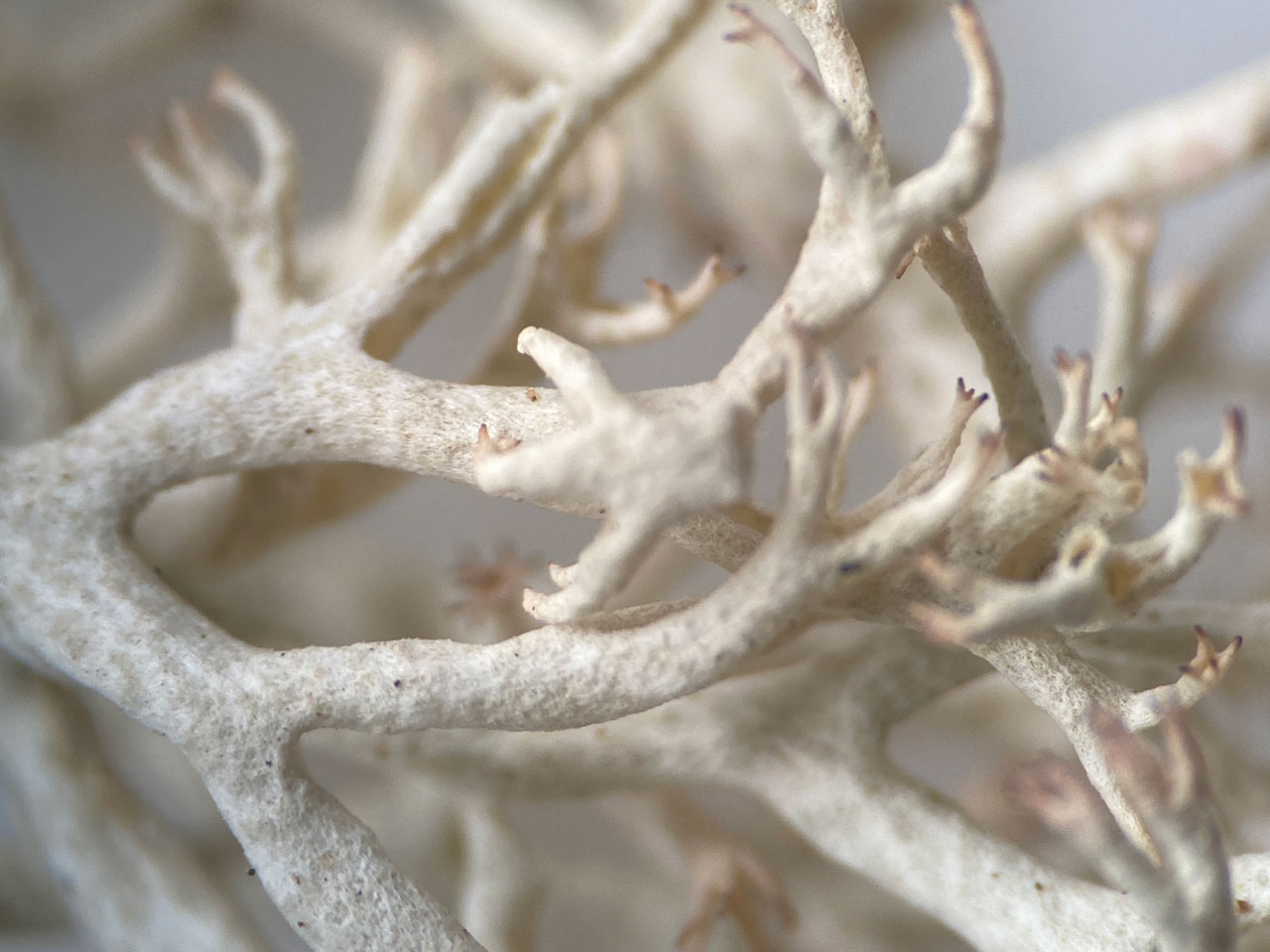Cladonia mitis
Cladonia arbuscula subsp. mitis
A rare Reindeermoss very similar to Cladonia arbuscula, but with less strongly orientated branches and a different chemistry (Pd–). Mostly restricted to acid dunes and stabilised pebble beaches, with few recent records, but still with large populations known in the Findhorn Dunes and a substantial inland population was discovered on a sand heath in Worcestershire in 2023.
Like Cladonia arbuscula, but more slender, paler grey and the apices less branched. The ± recurved terminal branches are also less strongly, or not at all, orientated in one direction. Thallus C–, K–, KC+ yellow, Pd– (rarely Pd+ red), UV– (usnic and usually rangiformic acids, rarely, also fumarprotocetraric acid).
The status of Cladonia mitis in relation to C. arbuscula has been unclear but it is now known to be phylogenetically distinct from C. arbuscula. Not easy to separate from C. arbuscula in the field but podetia less orientated branches can be tested with Pd and a negative result would indicate C mitis. New locations are probably best confirmed by TLC analysis to identify the lichen acids present.
On acid dunes and stabilised pebble beaches. Potentially overlooked inland heathland habitats in the east of Britain and a substantial inland population was discovered on a sand heath on windblown sand in Worcestershire in 2023.

Very rare, but locally abundant in some dunes in E. Scotland. S.E. England (Dungeness), E. Anglia (Norfolk), E. Scotland. Also on inland coversands in Central England (Worcestershire)
Largely restricted to acid dunes and shingle beeches on the east coast of Scotland and England, where it can be threatened by under management, over growth and stabilisation of dune systems. A remarkable population has been found surviving on inland blown sand in central Enland a habitat largely lost in the last century.
Britain: Near Threatened
Scotland: Priority Taxon for Biodiversity in Scotland
Pino-Bodas, R., Sanderson, N., Cannon, P., Aptroot, A., Coppins, B., Orange, A. & Simkin, J. (2021). Lecanorales: Cladoniaceae, including the genera Cladonia, Pilophorus and Pycnothelia. Revisions of British and Irish Lichens 19: 1-45. Link
Text by Neil A Sanderson based on Pino-Bodas et al (2012)





